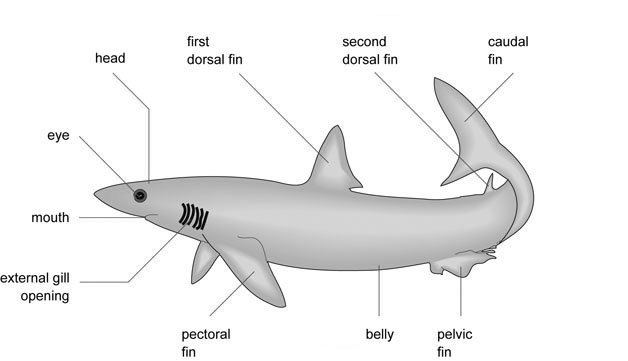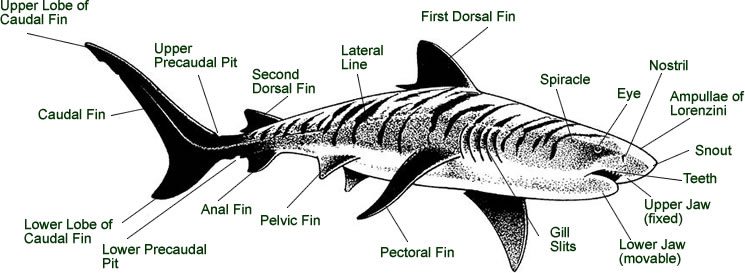Sharks: Form and Function
- Fins
- Pectoral fins (x2)
- Long fins on ventral side behind head on both sides of body
- Used to keep from sinking and steering
- Pelvic fins (x2)
- Close to tail on ventral (bottom) side.
- Stabilizers to prevent rolling to either side
- Dorsal fins
- 1st
- On top and behind head.
- Keep shark upright, prevent tipping
- IF there is a 2nd
- much smaller, near tail
- Anal fin
- **only on some species**
- Between pelvic fins and tail on ventral side
- Used for stability
- Caudal fin (tail)
- Moves from side to side to propel entire body forwards
- Does not allow for backwards movement
- Rostrum
- pointed snout
- Skin: Denticles
- V-shaped scales
- Reduce drag and turbulence so sharks can swim quickly and quietly
- The rough texture of the skin is referred to as shagreen
- Nostrils
- Primary sense for sharks is the sense of smell
- Sharks can detect 1 drop of blood in 25 gallons of water and from 0.25 miles away
- Rely on smell to locate prey
- Lateral lines
- Sense organ used to detect motion or vibrations in the water
- Ampullae of Lorenzini
- Electroreceptors
- Allow sharks to sense minor electrical charges caused by muscles and nerves in prey
- Nictitating Membrane
- Membrane over eye that protects when being attacked or when hunting
- Sharks do not blink
- Water surrounding eye cleans it

